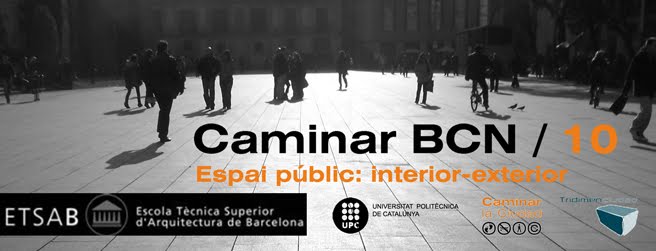
For me as an foreigner, all the area was interesting. Especially at the end of a narrow road, there is space.such as plaza del rei.They are like suprise presents for pedestrians .on the other hand, at there I felt a little bit scary because of closedness

I'd like to introduce and compare cheonggye-Cheon of Seoul.The Cheonggyecheon used to be a naturally formed streamSince the Joseon Dynasty(1392~1910) rulers, the narrow river has been a drainage system of seoul .


During the indurtrialization, the streem had been covered with concrete as an elevated highwayBy the end of the 1950s, the area became a symbol of poverty and slovenliness, being filled up with trash and wastes. And then health and environmental issues arised.
Now the streem has been restored with nature for citizens and tourists.
Around the streem, Cheonggyecheon, it has been a major business and commercial area. so there are more than 20 narrow and wide bridges over it for connecting alongside. From the Tŏksu Palace and Old city hall and plaza of city hall, the streem start with an waterfall. Jongo-tower, Topgol park, the royal ancestors’ shrine, Mungdong(center of the city) and Insa-dong are located both side of the streem. the streem is continued to Tongdaemun(the East Gate of old seoul).People can walk along streem and can go up and down from it easily.
I think it performs as an public space with nature and a rout.
================================================================
Para mí, como un extranjero, toda la zona es interesante.
Especialmente al final de un camino estrecho, hay espacio como la plaza del Rei.
Son como un regalo sorpresa para los peatones.
Por otra parte, me sentí un poco de miedo, porque de cerrazón
Me gustaría presentar y comparar Cheonggye-Cheon de Seúl.
El Cheonggyecheon solía ser un arroyo natural formado desde la dinastía Joseon (1392 ~ 1910)
os gobernantes, el estrecho río ha sido un sistema de drenaje de Seúl .
Durante el industrialización, el arroyo había sido cubierto con hormigón como una autopista elevada.
A finales de la década de 1950, el bario se convirtió en un símbolo de la pobreza y la dejadez, se llenaron de basura y desechos. Y entoncesde salud y medio ambiente arised.
Ahora, el streem ha sido restaurada con la naturaleza para los ciudadanos y turistas.Alrededor de la Streem, Cheonggyecheon, que ha sido un gran zona de las empresas y comercial. por lo que hay más de 20 puentes estrechos y anchos del mismo para la conexión .
Desde el Palacio Toksu y el Ayuntamiento antiguo y la plaza del Ayuntamiento, el arroyo comenza con una cascada. Jongo-torre, parque Topgol, santuario de los antepasados reales, Mungdong (un centro de la ciudad) y Insa-dong están situados ambos lados del arroyo. El camino y el arroyo son seguido Tongdaemun (la Puerta Este de Seúl antigua). La gente puede caminar a lo largo del arroyo y puede subir y bajar de él fácilmente
Creo que funciona como un espacio público con natural y una derrota.

